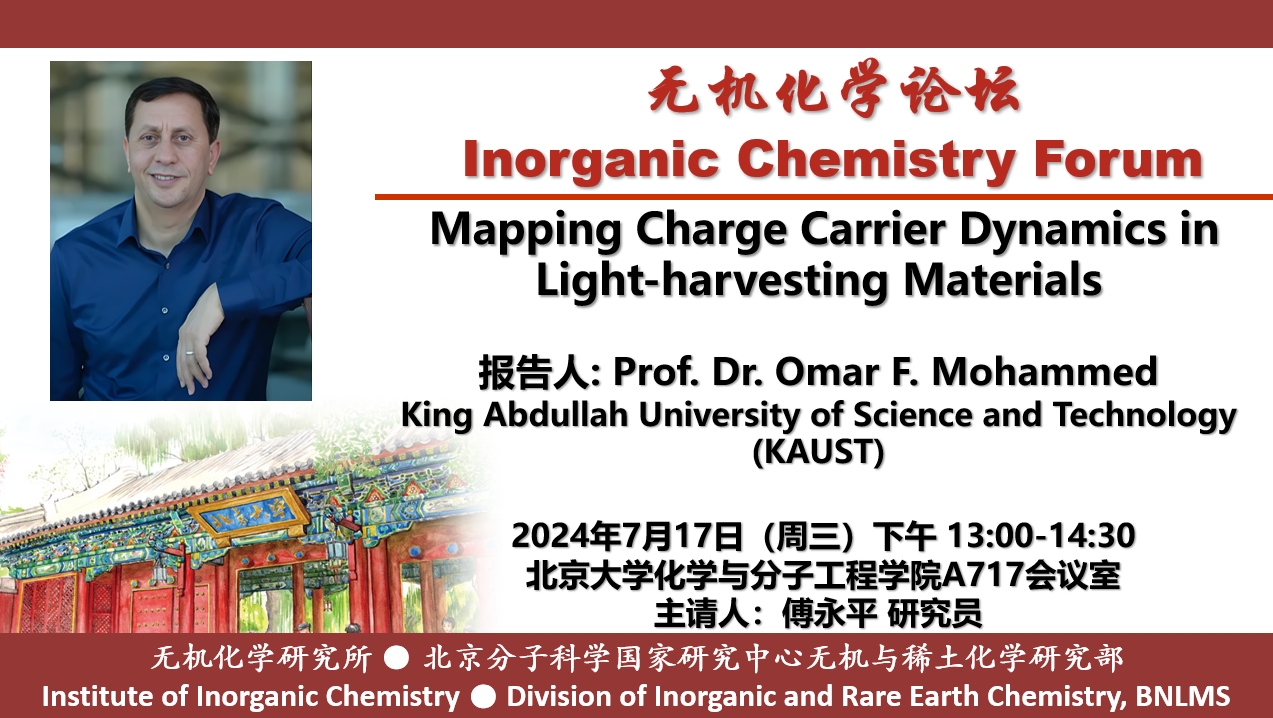
Abstract
The separation and collection of photo-generated charge carriers in light-harvesting devices are limited by the losses and ambiguous dynamical events at the surfaces and interfaces of the absorber layers.1-3 These events occur in ultrafast time scales and can only be visualized selectively in space and time by scanning ultrafast electron microscopy (the sole technique capable of surface-selective visualization of light-triggered carrier dynamics at nanometer and femtosecond scales). In this method, the surface of the photoactive materials is excited by a clocking optical pulse and the photo-induced changes will be directly imaged using a pulsed electron beam that generate secondary electrons with a couple of electron volts energy, which are emitted from the very top surface of the material in a manner that is extremely sensitive to the localization of the electron and hole on the photoactive material surfaces. This powerful technique along with ultrafast laser spectroscopy allow us to directly and precisely investigate and decipher the trajectory of charge carriers on materials surfaces and interfaces in real space and real time. Through this work, we have optimized the properties of photoactive materials for applications in light-harvesting devices that led to the world-record solar cell devices based on perovskite crystals. Moreover, we have clearly demonstrated in space and time how the surface orientations, surface oxidation and passivation can significantly impact the overall dynamical processes of photo-generated charge carriers in optoelectronic materials.4-5 Finally, I will talk about our recent ground-breaking work in X-ray imaging technology that include cutting-edge materials discovery, heavy-atom engineering, state-of-the-art characterization and efficient (nearly 100%) interfacial energy transfer between sensitizers and scintillators that has led to the development of novel X-ray imaging screens with outstanding sensitivity, ultralow detection limit, unprecedented spatial image resolution and low-cost fabrication, with potential applications in medical imaging, industrial monitoring and security screenings.
Biography
Dr. Mohammed is Professor of Chemistry and Materials Science & Engineering; and the principal investigator of ultrafast laser spectroscopy and four-dimensional (4D) electron imaging laboratory at KAUST. He earned a Ph.D in Physical and Theoretical Chemistry from Humboldt University of Berlin, Germany. Prior to joining KAUST, Dr. Mohammed was a senior research associate at Caltech, where he worked with Professor Zewail, a Nobel laureate, on developing innovative laser spectroscopic and time-resolved electron imaging techniques. During his time at Caltech, Dr. Mohammed made significant contributions to the profound understanding of the dynamics of photo-generated charge carriers in photoactive materials, and pioneered the development of advanced characterization techniques for studying surface and interfacial dynamics on nanometer and femtosecond scales. The current research activities of Dr. Mohammed are focused on the development of highly efficient solar cells, light-emitting diodes and X-ray imaging scintillators with the aid of ultrafast laser spectroscopy, 4D electron imaging and computational materials.
Dr. Mohammed has published over 340 articles in international peer-reviewed journals including Science, Nature, Nature Materials, Nature Energy and Nature Photonics, large number of these papers are currently highly cited ( 39 papers). Dr. Mohammed has nearly 39,000 citations and 94 h-index. In 2019, 2020, 2021, 2022 and 2023, Dr. Mohammed was identified as a Highly Cited Researcher by Web of Science. In January 2020, he joined the Editorial Advisory Board of the Journal of Physical Chemistry Letters. In February, 2021, he was named a Fellow of the Royal Society of Chemistry (FRSC). In March, 1, 2021, Dr. Mohammed was appointed an Associate Editor of ACS Applied Materials & Interfaces. In January 2023, he joined the Editorial Advisory Board of ACS Materials Letters and the Journal of Physical Chemistry A & B & C (American Chemical Society) – some of the leading journals of the field of Physical Chemistry and Materials Science. In July 2023, he was named a Fellow of the Institute of Physics (IOP). Finally, Dr. Mohammed is the recipient of several prestigious awards, including the Distinguished Scholar Award from Arab Fund for Economic and Social Development, Kuwait; Long-term Fellowship, Germany, the Japan Society for the Promotion of Science (JSPS) fellowship, Japan, the State Prize in Basic Sciences, Egypt, Shoman Prize in Photochemistry, Shoman Foundation, Jordan, and Kuwait Prize in Physics, Kuwait Foundation, Kuwait.